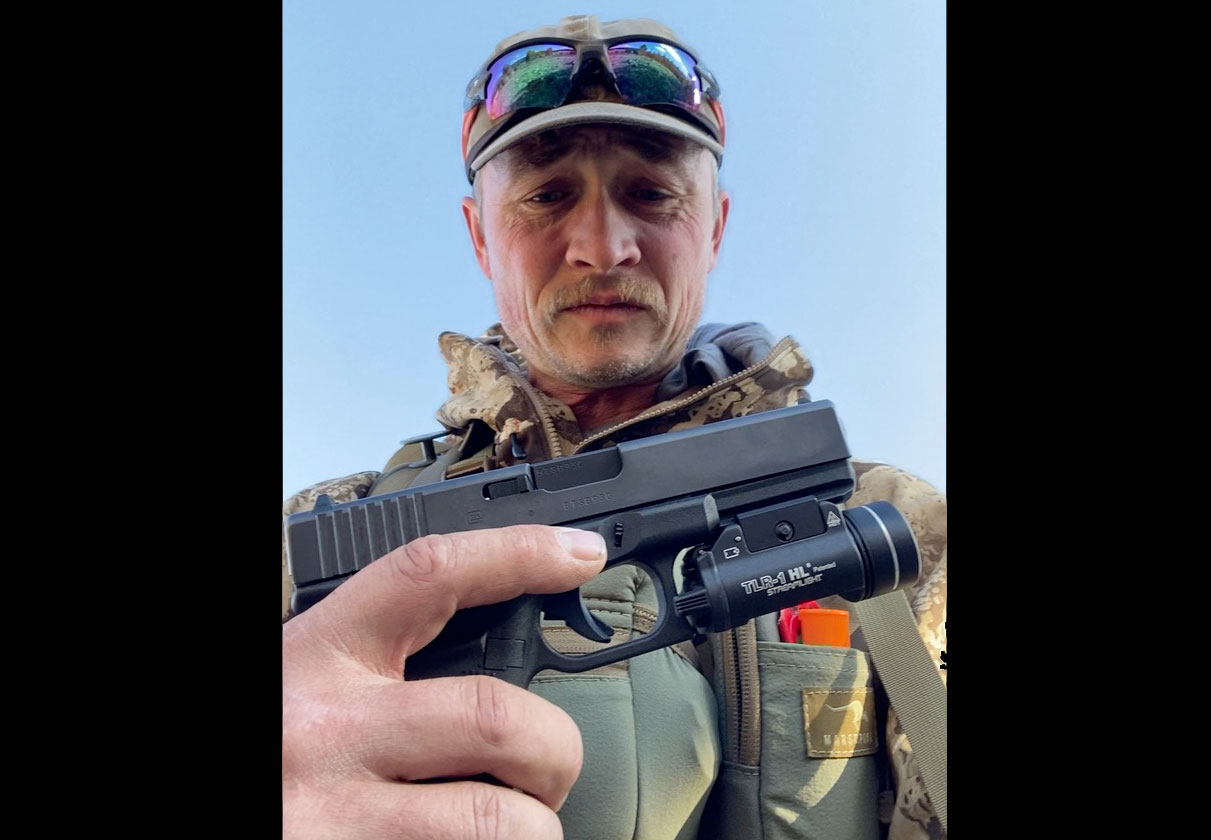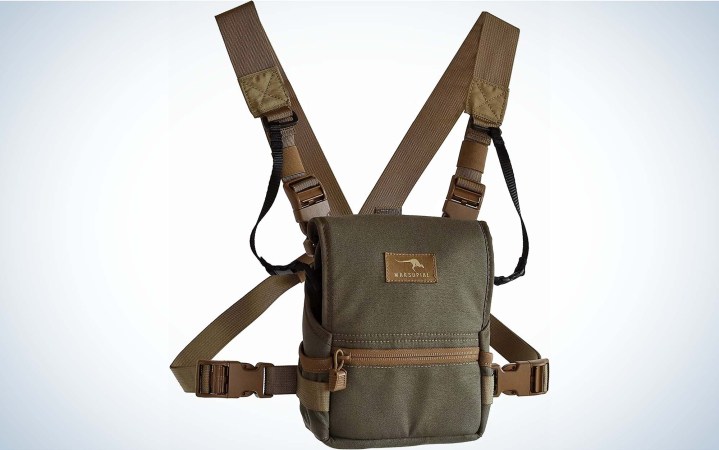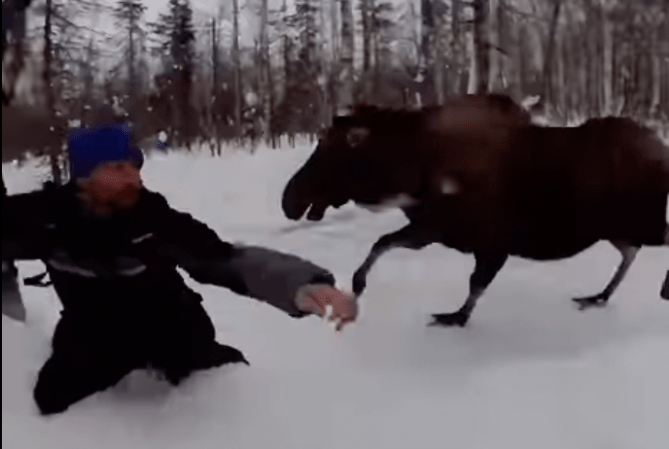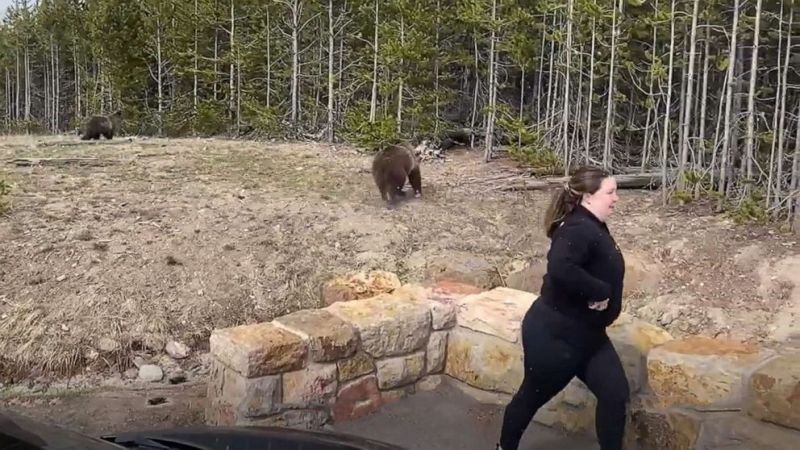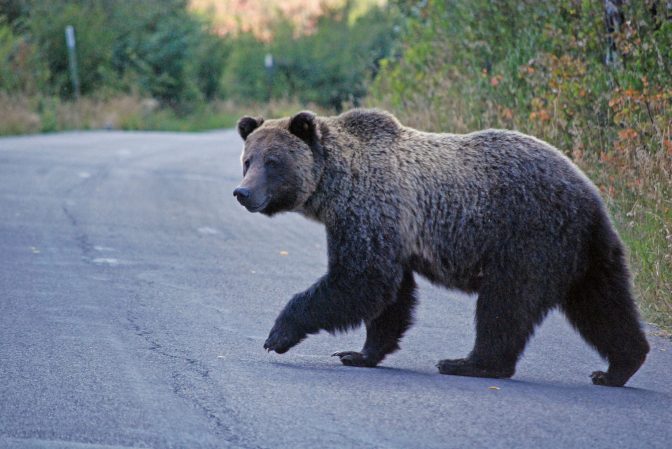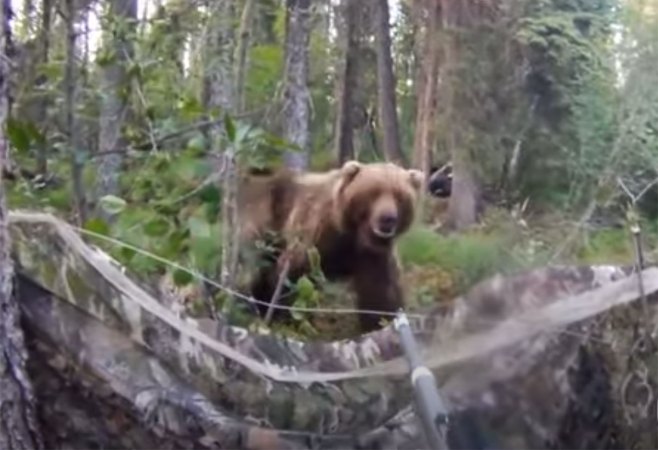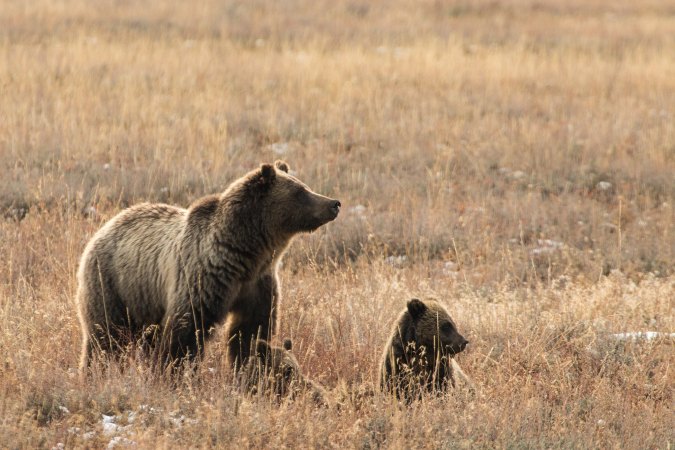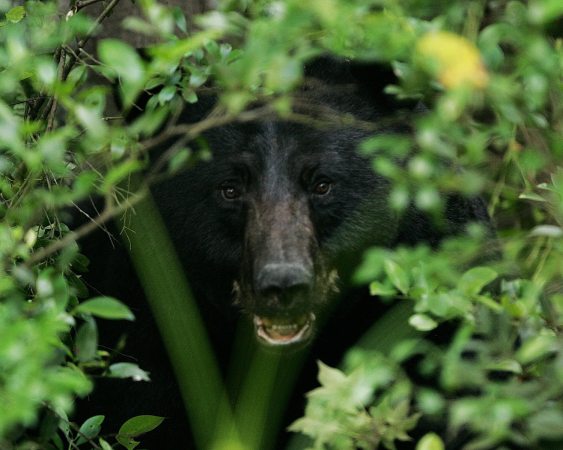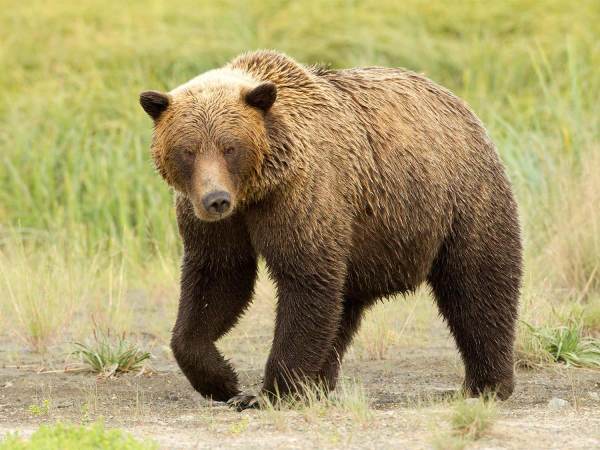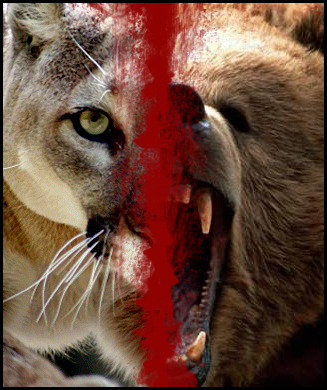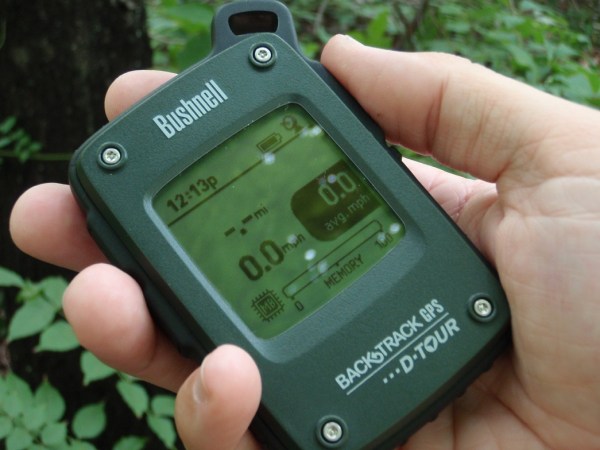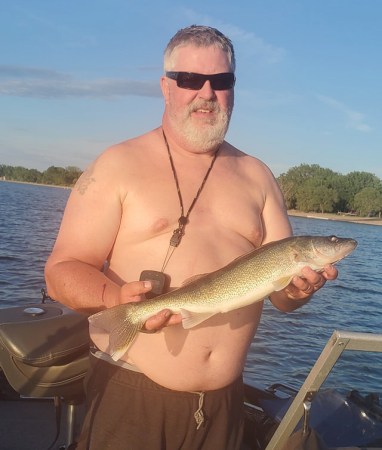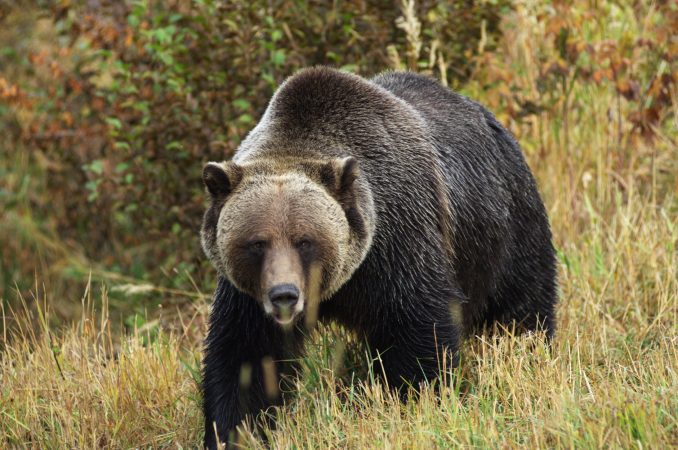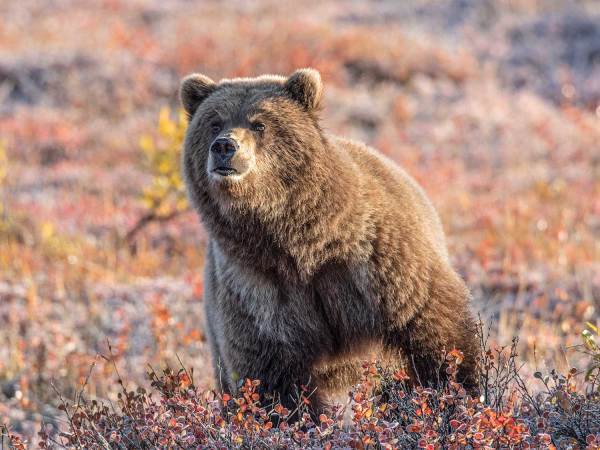We may earn revenue from the products available on this page and participate in affiliate programs. Learn More ›
Sam Kezar reckons he’d be either dead or disfigured if he hadn’t spent all summer fast-drawing his Glock. He bases that conclusion on a sobering calculus of time and distance—the two seconds required for a Wyoming grizzly bear to cover 20 yards—and the fact that Kezar somehow managed to get off seven shots from his 10mm in that span of time as he was staring terror in the face. As the bear was closing fast, and he was backpedaling into the unknown.
While Kezar is grateful that he’s alive to tell the story of his ordeal, which occurred while bowhunting elk just outside Yellowstone National Park last September, he’s not especially surprised at his own capabilities. After all, he was preparing for just such an outcome for months before it happened. If he’s handy with a handgun, Kezar, an arborist who lives near Sioux Falls, South Dakota, is also worthy with his words. Below is the story of how he survived a grizzly charge last fall, as he tells it. —Andrew McKean
I don’t do much except hunt. It’s a priority in my life. I have my professional career and I have my family, and I hunt. I don’t do softball league or anything else except home chores and shooting my bow, and hunting, or thinking about hunting.
Back in 2016, I got to the point in my life that I wanted to go elk hunting, and I dove head first into learning everything I could about it. I wanted to DIY it, and went to Colorado for three years in a row before I finally killed a bull. That fed my determination to go elk hunting every year, and last year I drew a Wyoming tag for a unit right outside Yellowstone. I knew it was grizzly country, but also that it was rare to run into bears. If you’re smart about it, you shouldn’t really have a problem, but the day I learned I drew the tag, I went to Scheels and bought a Glock Model 20 in 10mm, because that is what I had researched to be the best overall choice in bear country. Sure enough they had one and I bought the only box of ammo they had, 180-grain full metal jackets.
READ NEXT: Bear Gun Shootout: 10mm vs .44 Mag.
Meanwhile, I had been researching binocular harnesses, and I determined that the Marsupial Gear harness and their soft-holster system that attaches by moly webs right to the bottom of the bino harness was the way to go. I could have a right-hand draw right on my belly, which I had read was way preferable to having a gun on your hip or in your pack.
Marsupial Gear Binocular Harness
From that moment on, I treated that pistol the same way I do my bow. I shot it every day, or every other day, and I practiced with purpose. I’d go down to my little room and put my chest rig on, pick a spot on the wall, and I’d just practice drawing and practice getting my grip and practice obtaining my target. I’d do dozens of reps of those drills, then I’d make sure the weapon was clear and dry-fired it another dozens of times. Then I’d come back the next day or two days later and do it all over again. I did that all summer long along with shooting my bow.
Toward the end of the summer, I was able to buy one more box of ammo, so I had 100 rounds, and I started live-fire practice in my back yard. I’d fill a gallon water jug, set it on a log about the height of a bear, and then practice. Mainly, I practiced not being aware, then all of a sudden having to react, to quick-draw the pistol and make a shot, hit the target. A few times I’d quick-draw and rapid-fire 3 to 4 shots as I’m backpedaling. The way I looked at it, worst case is that I get surprised and have to react. But if it’s not a surprise, I should be able to yell at the bear or use pepper spray.
So about pepper spray. I watched a lot of videos and read a lot about which is better, pepper spray or a gun? From that I determined that my gun was going to be number one and pepper spray will be my backup. From my experience, pepper spray may work some of the time, but a firearm is going to work every time you pull the trigger.
Into Grizzly Country
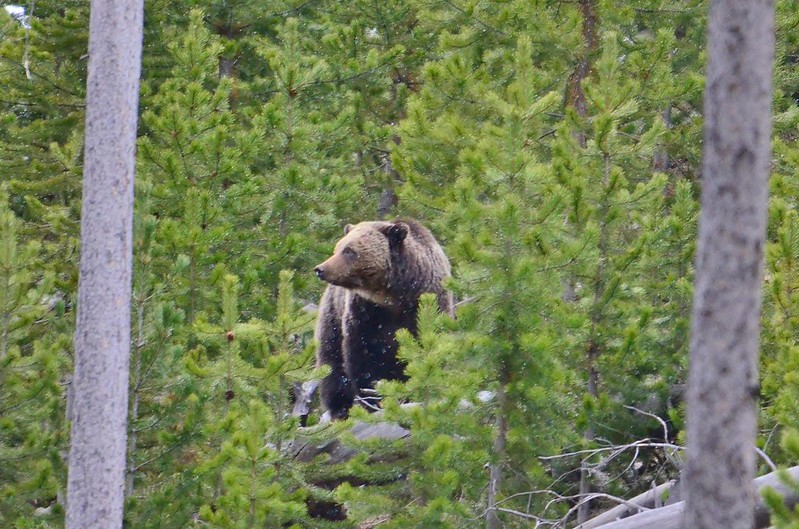
So we get out to Wyoming, me and my buddy Jerrad who wants to come to help me call and be a backup in case of bears. We get into elk and I actually shot and lost a bull the day before the attack. I have no idea how that bull didn’t die, but we went back to get on that herd. We couldn’t find them so we pulled out and drove to some higher country. It’s traditional elk and griz country, lots of whitebark pine, some softer understory, no real dark timber but just little groves of heavier spruce. We saw fresh bear crap and Jerrad and I both told each other to keep our heads on a swivel. In another mile we saw big scratches on a tree but we continued on to bugle into some hidden basins. We had walked through some thicker timber into an opening, and there was thicker spruce in front of us.
We were halfway into that opening when all of a sudden, we hear and see a bunch of rustling and then the loudest roar I could imagine. We both yelled ‘BEAR!’ What happened next all happened within a second and a half.
After I yelled ‘BEAR!’ the next thing I realize is that I have my bow in my left hand and my pistol in my right hand. I don’t remember drawing my pistol. And as soon as I realize I’m in that position, out from the trees in front of me comes this bear. I do recall having the realization that it might be a bluff charge, and deciding to put a round at its feet to scare it. I pulled up and I shot right at its feet and immediately realized, no, this bear is coming straight at me.
The only way I can describe this will be familiar to dog people, especially those who have Labradors. You know when you’re playing fetch with your dog and they’re super jazzed up and they’re running straight at you. You know, with their head forward and their feet way out in front of their snout, their legs way back and they’re full-speed coming at you. That’s how that bear looked to me. I knew at that point that this is not a bluff charge. My mind processes that this bear is coming at me. I immediately start rattling off rounds as quickly as I can on center of mass. So I shot the first time at the ground, then I got seven more shots off, and as I’m going through those seven shots I see the fur ripple on the bear at least twice, so I knew that I hit it. As I’m getting between the sixth and seventh shot, I realize I’m falling backward. I didn’t know I was backpedalin,g but I was backpedaling. And as I’m falling backwards I suddenly realize I’m falling, and that my foot will be coming up, and that I don’t want to shoot my foot. So I compensate off to the right side to not shoot my left foot and pulled the trigger sort of hesitantly. I think I tried to stop myself but couldn’t. Luckily, I didn’t shoot my left foot off. Right at that point, the bear gets down on its front legs to make that last lunge to get me. But instead of making that last lunge, it stops, puts on the brakes, turns, and runs away, and as it runs away I shoot one more at its hind end.
I get up, and hear my buddy telling me to ‘Back up! Back up! Back up!’ and I immediately taste and smell the pepper spray cloud that I stood up into. We back up.
Hearing the Death Moan
Let me rewind a little bit. As soon as the bear comes out of the trees, my buddy—he’s a little behind me and off to my left—sees the bear come out of the trees he takes the safety off the pepper spray and deploys the spray. There’s enough of a breeze that the spray goes out about 3-4 feet and comes back right into my buddy’s face. It never reached the bear. As he gets sprayed in the face, he draws his weapon and fires two shots at the bear. His first shot is right as the bear is on its front legs about ready to jump on me. He hits it in the chest. His second shot missed.
We stand up, back up a couple hundred yards as we’re screaming at the bear to get away. I do a quick mag check and see I have nine rounds left, eight in the mag and one in the chamber. I can see the bear sitting on its back haunches around 90 yards away, and I just Hail Mary one in its direction. The bear goes on its haunches and walks back into the trees where it came from, real slow with its head down, and then starts to moan.
I’ve killed two black bears with my bow and have never head the death moan. When I heard it this time, I said, ‘Jerrad, I think that’s the death moan.’ He tells me we’re not sticking around to find out. We backed out into the middle of a meadow where I could wash his eyes to get that pepper spray out of his face, and I took a selfie video explaining what had just happened, and then a video of washing Jerrad’s eyes out. We hiked back to the truck, collected ourselves, and then drove out to get cell service and call the wardens. We went into town and got a burger and a hotel room. I texted a few people, including my wife, to tell her that we’re okay, but that we got charged by a grizzly bear.
The Aftermath
Next morning we met with the wardens, a state and a federal warden, plus Wyoming’s big-game biologist. I was kind of nervous, but I knew it was the right thing. The night before, the state warden had told me the process. He told me, ‘You have the right to defend your life, but we’ll treat this as a federal investigation because you may have killed an endangered species. You will be under federal investigation.’ I mean, I was hot about that. Here I had just about been killed by this bear, and I’d be treated like a criminal?
But I have to say, the wardens were professional and really competent. They first recorded my version, and then they recorded Jerrad’s version. Then we drove up to the trailhead, and they were totally cool with us loading our weapons. They had sidearms plus shotguns and three dogs. We get back in there and they went through a full investigation. There had been a little snow overnight, and you could see where I had dropped my bow—it was still there—and there were paw prints all over, from the bear’s cub. That’s why she was roaring when we encountered her; she was telling her cub to take off. The wardens ask me to stand by the bow, which is where I was when she came out of the trees.
Here’s the thing, in my initial statement to the wardens, I told them that the bear came out of the trees maybe 40 yards from me, and got as close as 15 or maybe 20 yards. The wardens ask Jerrad if that’s the way he remembered it, and he just looks at me like I’m crazy. He says, ‘Sam, what the f$#k is wrong with you? That bear wasn’t 40 yards. It was more like 10 yards, and maybe closer.’ So I stand at the point where I dropped my bow and take out my rangefinder and range it: 17.1 yards. Then the wardens ask how close she got. I can see there’s a rock with a spot of blood on it, which is where she must have turned when Jerrad shot. That was pretty much right where my bow was, and where I started back-pedaling and where I fell back right against a tree. I find that spot and range the rock with blood. Six yards.
The federal game warden looks over the situation. He looks at the range. He looks at me, then looks around and then back at me. He says something like, ‘Holy shit. How did you get off so many shots so quickly?’ I tell him, I don’t know. I just did. Then the state warden asks the biologist, how quickly could a bear close the distance from 17 yards? He says less than a second at full speed. That’s when it hit me, just how close and quick everything was, but also how slow it was in my memory. I about lost it, about threw up on a rock. It seemed so much longer to me, but the warden told me that this is common. People remember things differently in the moment than they actually were. The opposite is also true.
Then the wardens [found the bear and] did a necropsy on her. She was 18 to 20 years old, and had just the one cub. She was lactating, which was the worst thing. That cub was probably not going to make it. It had come back around its mom after we left, and maybe had a last meal off her, but would probably get killed by other bears or starve in the winter. But the wardens also found that the sow had a fresh small-caliber rifle wound in her right quad that went into her guts. It was probably only 2-3 weeks old. So some jackwagon out there took a pot shot at her to scare her away or to kill her. The wardens said that’s why she was so pissed. She was old. Had a cub sucking on her. And was wounded.
Then the wardens destroyed the bear, on purpose. They destroyed the hide, the paws. They were definitely not going to let us take photos, and obviously we couldn’t take any part of the animal. They also encouraged us not to share our account on social media, certainly not until the case was closed.
They figured that I hit the bear three times out of the seven times I shot, twice in the mid-chest and one shot grazed her right shoulder and broke her back femur. They said that Jerrad had hit her once broadside, right behind the shoulder, a perfect double-lung shot. The way they framed it in their report, was that the bear was coming right at me and had I not been prepared to shoot it a couple times, and had my buddy not made a good shot to the lungs, that the bear would have gotten on top of me. And that very well could be true. But I didn’t even remember drawing my gun, so…
Read Next: Best Glocks: A Complete Guide to Glock Pistols
Practicing with Purpose
But there are a couple things that I do know. One, I found out that my fight-or-flight response is to fight. My first instinct wasn’t to turn and run or to freak out. My instinct was to act. To shoot back. And to make sure I was protected, which I don’t think is a conscious choice but now at least I know that. Also, I never knew what fear was until I was on my butt with a grizzly bear one stride away from landing on top of me. There was a very small split-second period from when that bear was that close and I’m on my butt that this feeling that I’ve never felt before in my life started to well up inside of me. I was about ready to scream like a little girl, bawl like I was 5 years old, and call for Mom. And then, as fast as it came, it went away, but it was definitely there, and later thinking about it, I realized that this is what people in battle must know.
And I learned the value of practicing with purpose. I kept hearing from people—on social media and in videos—that you have to work on your mechanics. It made sense to me. You work on your mechanics with your bow. I don’t go out to just shoot my bow; I go out there to make purposeful shots to get better. I focus on my form and details. I did the same thing with my Glock. You can do everything you need to do with a gun by dry-firing that you can do with a live round, and I did that, to the degree that when I needed it, it became instinctive, a muscle memory. I think that saved my life.
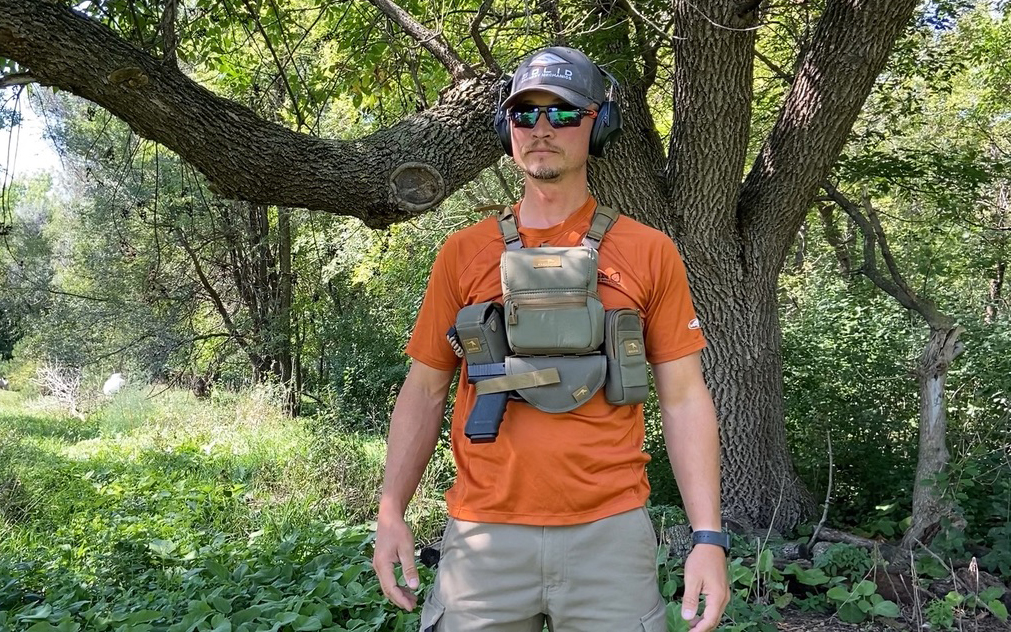
I have this thing on my Instagram profile. For much of my professional life, I was an arborist instructor, teaching people how to run chain saws and climb trees. There’s a lot of safety considerations; you don’t want to drop a big tree on yourself or fall out of a tree. So I developed this motto: ‘How you do anything is how you do everything.’ That’s exactly how I went about my preparation for this elk hunt. I knew bears were a possibility—as unlikely as getting hit by lightning, but definitely a possibility—and figured that I’d do everything I could to be prepared. If I hadn’t taken my preparation as seriously as I did, I can almost guarantee it wouldn’t have worked out the way it did. I’d have either been really hurt or you’d have read in the papers about a couple of hunters getting killed by a grizzly bear.
I wish it hadn’t happened. I never wanted to encounter a bear, and it sucks for that bear and her cub. But I also think that those bears in the Yellowstone area are the apex predators, and they’re not backing down, so these kind of encounters are probably inevitable until we get approval to hunt them and restore fear of humans.
But that was a life-changing event. I’m happy it worked out, for me and Jerrad, at least. And I’m happy my practice made a difference. But the intensity is something that’s part of me now. In fact, just last week Jerrad and I got tattoos. Mine is a grizzly bear paw on the inside of my right forearm, where I can always see it.
